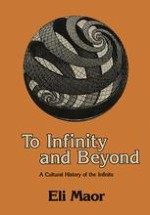1987 | OriginalPaper | Chapter
The Fascination of Infinite Series
Author : Eli Maor
Published in: To Infinity and Beyond
Publisher: Birkhäuser Boston
Included in: Professional Book Archive
Activate our intelligent search to find suitable subject content or patents.
Select sections of text to find matching patents with Artificial Intelligence. powered by
Select sections of text to find additional relevant content using AI-assisted search. powered by
A series is obtained from a sequence by adding up its terms one by one. From a finite sequence a1, a2, a3, …, a n we obtain the finite series, or sum, a1 + a2 + a3 + …, + a n . But for aninfinite sequence a1, a2, a3, …, a n , …, a problem arises: How should we compute its sum? We cannot, of course, actually add up all its infinitely many terms; but we can, instead, sum up a finite, but ever increasing, number of terms: a1, a1 + a2, a1 + a2 + a3, and so on. In this way we obtain a new sequence, the sequence of partial sums of the original sequence. For example, from the sequence 1, 1/2, 1/3, …, 1/n, … we get the sequence of partial sums 1, 1 + 1/2 = 1.5, 1 + 1/2 + 1/3 = 1.83333 …, and so on. If this sequence of partial sums converges to a limit S, then we say that the infinite series a1 + a2 + a3 + … converges to the sum S. For the sake of brevity, we also use the phrase, “the series has the (infinite) sum S.”
